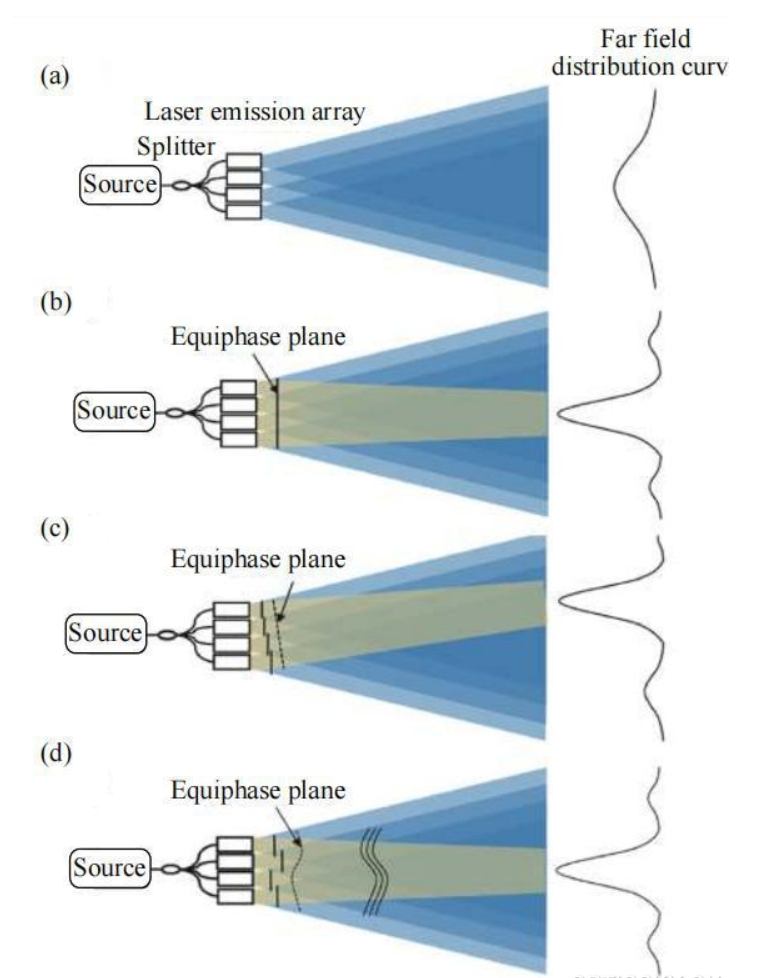By controlling the phase of the unit beam in the beam array, the optical phased array technology can realize the reconstruction or precise regulation of the array beam isopic plane. It has the advantages of small volume and mass of the system, fast response speed and good beam quality.
The working principle of optical phased array technology is to properly shift (or delay) the signal of the base element arranged according to a certain law to obtain the deflection of the array beam. According to the above definition, optical phased array technology includes large-angle beam deflection technology for beam emission arrays and array telescope interference imaging technology for high-resolution imaging of distant targets.
From the emission point of view, the optical phased array is to control the phase of the array transmitted beam, so as to realize the overall deflection of the array beam or the phase error compensation. The basic principle of optical phased array is shown in FIG. 1. FIG. 1 (a) is an incoherent synthetic array, that is, there is only “array” without “phased array”. Figure 1 (b) ~ (d) shows three different working states of optical phased array (that is, coherent synthetic array).
Incoherent synthesis system only carries out simple power superposition of array beam without controlling the phase of array beam. Its light source can be multiple lasers with different wavelengths, and the far-field spot size is determined by the size of the transmitting array unit, independent of the number of array elements, the equivalent aperture of array and the duty ratio of beam array, so it cannot be counted as a phased array in the true sense. However, incoherent synthesis system has been widely used because of its simple structure, low requirement on light source performance and high output power.
From the perspective of receiving, optical phased array is applied in the high-resolution imaging of remote targets (FIG. 2). It is composed of telescope array, phase retarder array, beam combinator and imaging device. The complex coherence of the target source is obtained. The target image is calculated according to the Fanssert-Zernick theorem. This technique is called interference imaging technique, which is one of the synthetic aperture imaging techniques. From the perspective of system structure, the structure of interferometric imaging system and phased array emission system is basically the same, but the optical path transmission direction in the two applications is opposite.
Post time: May-26-2023







